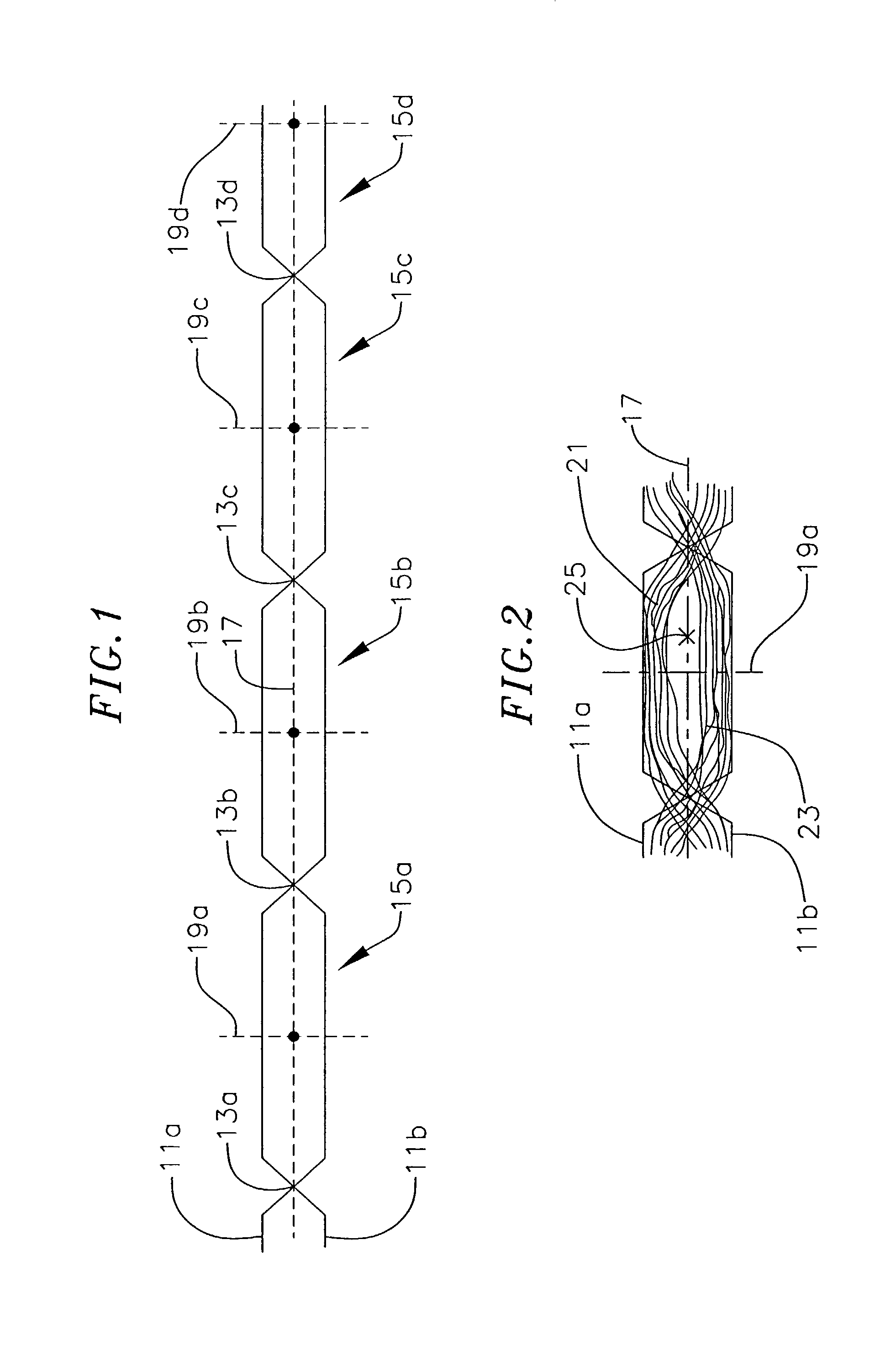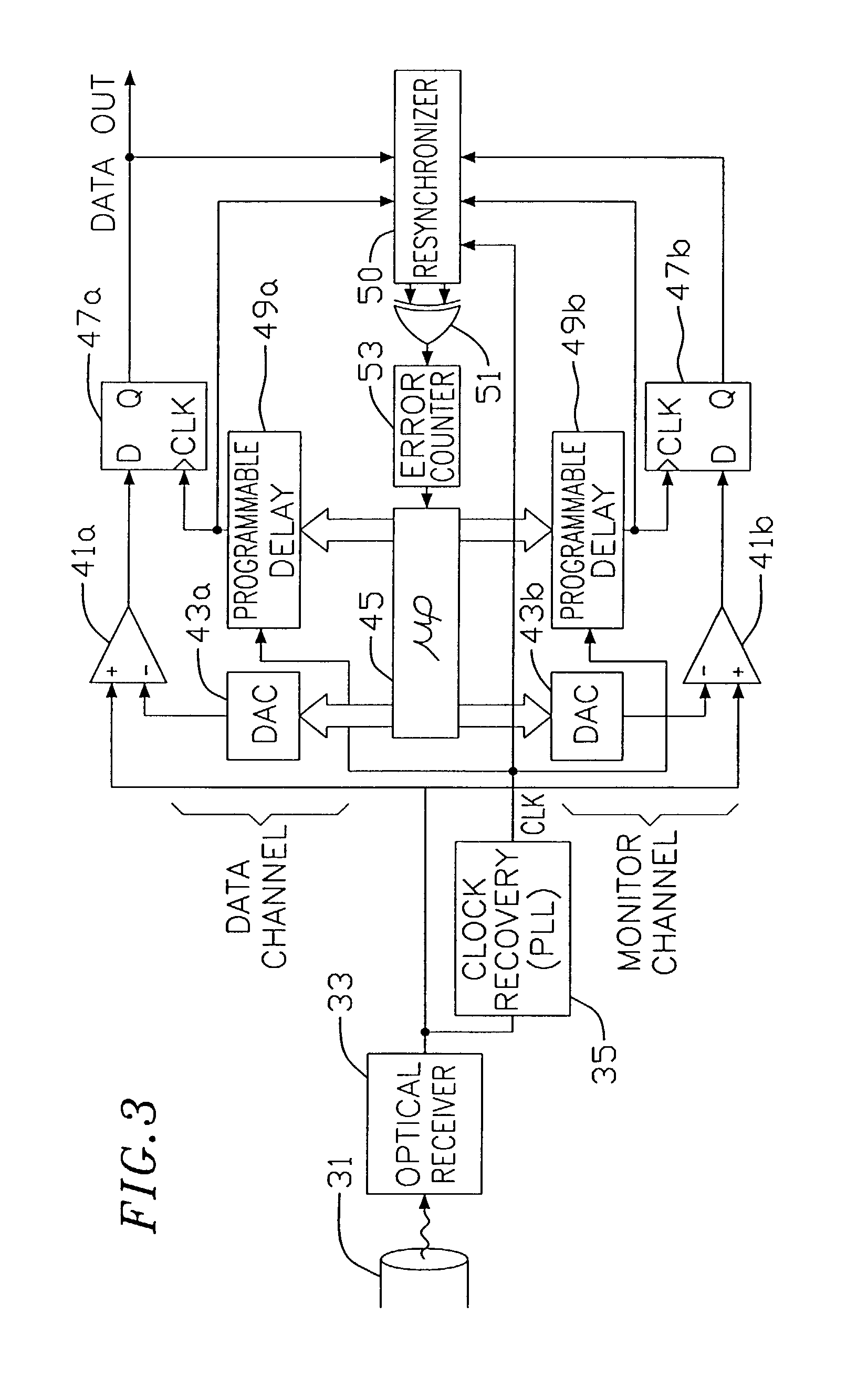Multiple channel adaptive data recovery system
a data recovery and multi-channel technology, applied in the field of digital data communication systems, can solve problems such as data recovery errors, system errors, bandwidth loss,
- Summary
- Abstract
- Description
- Claims
- Application Information
AI Technical Summary
Benefits of technology
Problems solved by technology
Method used
Image
Examples
Embodiment Construction
[0032]FIG. 2 illustrates a possible actual data-eye of a single data cell. The data eye is formed by superimposing waveforms of a plurality of data signals over a single data cell. A first plurality of varying data signals 21 are data signals having the same bit sequence as the first data signal 11a, and a second plurality of varying data signals 23 are data signals having a bit sequence corresponding to the bit sequence of the second data signal 11b. As illustrated, the plurality of data signals vary substantially from the data signals. The plurality of data signals generally to do not reach the expected upper voltage level, or the expected lower voltage level. The plurality of data signals additionally exhibit increased rise times, decreased steady state times, and increased fall times. In addition to varying from the data signals, the plurality of data signals vary from each other, having different waveforms. Moreover, the variations in rise time, fall time, and steady state time...
PUM
 Login to View More
Login to View More Abstract
Description
Claims
Application Information
 Login to View More
Login to View More - R&D
- Intellectual Property
- Life Sciences
- Materials
- Tech Scout
- Unparalleled Data Quality
- Higher Quality Content
- 60% Fewer Hallucinations
Browse by: Latest US Patents, China's latest patents, Technical Efficacy Thesaurus, Application Domain, Technology Topic, Popular Technical Reports.
© 2025 PatSnap. All rights reserved.Legal|Privacy policy|Modern Slavery Act Transparency Statement|Sitemap|About US| Contact US: help@patsnap.com



